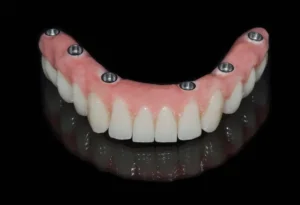Understanding the costs associated with a dental bridge is crucial for anyone considering this treatment option for missing teeth. The price of dental bridges can vary widely depending on several factors, including the type of bridge, the materials used, and the complexity of the placement. Additionally, geographical location and the expertise of the dental professional can also influence the final cost. In this article, we will explore these variables in detail to provide you with a comprehensive overview of what to expect when budgeting for a dental bridge.
Factors Influencing Dental Bridge Price
Understanding the various factors that influence the price of a dental bridge can help patients make informed decisions. Several elements contribute to the cost, from the materials used to the type of bridge and the complexity of the procedure. Patients should consider these factors carefully, as they not only affect the price but also the durability and functionality of the dental bridge. Let’s delve into the primary aspects that determine the cost. By being informed about these variables, patients can better navigate their options and choose a solution that fits both their needs and budget. 
Material Used in Dental Bridges
The material selected for a dental bridge significantly impacts the overall cost. There are various materials available, and each has its unique advantages and price points. Common materials include:
- Porcelain fused to metal (PFM): Offers a good balance between aesthetics and strength.
- All-porcelain: Provides the best natural appearance but can be more expensive.
- Zirconia: Known for its durability and excellent aesthetics, often at a higher cost.
- Metal alloys: Usually more affordable but less aesthetically pleasing.
Choosing the appropriate material is crucial, as it affects not only the appearance but also the longevity and strength of the dental bridge.
Type of Dental Bridge
The type of dental bridge selected also influences the price. There are different types of bridges, each designed for specific situations and requirements. Common types include:
- Traditional bridges: These are the most common and typically involve creating a crown for the tooth or implant on either side of the missing tooth, with a pontic in between.
- Cantilever bridges: Used when there are adjacent teeth on only one side of the missing tooth or teeth.
- Maryland bridges: Also known as resin-bonded bridges, they are often used for front teeth and have a metal framework with porcelain fused to it.
- Implant-supported bridges: Ideal for patients missing more than one tooth, these bridges are supported by dental implants rather than crowns or frameworks.
The complexity and type of bridge chosen will impact the overall treatment cost. For instance, implant-supported bridges may require more extensive procedures and higher expenses compared to traditional or Maryland bridges.
For further detailed insights on dental bridges and other dental procedures, be sure to explore our other articles and stay informed about the latest advancements in dental care.
Geographical Location and Dental Bridge Costs
When considering dental bridge costs, one significant factor that often comes into play is geographical location. The price of dental treatments, including bridge replacements and implantations, can vary widely based on where you live or choose to get treated. This is due to a variety of factors such as cost of living, local economic conditions, and the availability of skilled dental professionals. Understanding these variations can help patients make more informed decisions about their dental care.
In this article, we’ll delve into how geographical location impacts dental bridge costs by examining the price variations across different regions and the differences in costs between urban and rural areas. This information can provide a comprehensive outlook for those considering dental procedures, ensuring they receive quality care at a reasonable price.
Price Variations Across Different Regions
The cost of dental bridges can differ significantly from one region to another. For instance, in the United States, dental costs are generally higher on the East and West Coasts compared to the Midwest or Southern states. These differences are influenced by regional economic conditions, the cost of living, and the concentration of dental professionals in those areas.
In addition to economic factors, the availability of advanced dental technologies and materials in certain regions can also influence pricing. Areas with a higher density of dental schools or cutting-edge research facilities might offer more competitive rates due to increased competition among dentists.
It’s important for patients to conduct thorough research and consider these regional variations when planning for dental bridge procedures. Consulting with multiple dental practitioners and obtaining quotes from different regions can help in making an informed decision.
A fascinating study showed that patients willing to travel to neighboring states or even countries could save substantially on dental treatments, including bridges and implants. However, one must weigh these savings against the potential drawbacks of traveling for medical procedures.
Urban vs. Rural Cost Differences
Another critical factor that affects dental bridge costs is whether the treatment is sought in an urban or rural setting. Urban areas, characterized by higher population densities and more advanced healthcare facilities, tend to have higher prices for dental services. This is partially due to the increased cost of living and higher rent for dental offices in cities.
On the other hand, rural areas often offer more affordable dental services. Dentists in these regions might have lower overhead costs, which can translate to lower prices for patients. However, it’s also essential to consider the availability of specialized care. Urban centers usually have a higher concentration of specialized dental practitioners and advanced equipment, which might be necessary for complex cases.
Despite the potential cost benefits of seeking treatment in rural areas, patients should ensure that the quality of care is not compromised. Rural dentists might not have access to the same level of continuing education and advanced technologies as their urban counterparts. Therefore, it’s crucial to research the qualifications and experience of the dentist, regardless of their location.
Patients should also factor in travel costs and the potential inconvenience of frequent trips to rural areas for follow-up appointments, which can offset the initial savings. Balancing cost, convenience, and the quality of care is key to making the best decision for dental bridge treatments.
By understanding the influence of geographical location on dental bridge costs, patients can explore various options and find the most suitable and cost-effective solution for their dental needs. Don’t forget to check out our other articles for more insights into dental care and treatment options!
Insurance and Payment Plans for Dental Bridges
When considering the cost of dental bridges, it’s important to understand how insurance and various payment plans can significantly ease the financial burden. Different insurance policies cover varying portions of dental procedures, including bridges, while payment plans offer an additional layer of flexibility.
In this section, we will explore how insurance can affect the cost of dental bridges and the available payment plans and financing options to ensure you can afford the dental care you need without compromising on quality.
How Insurance Can Affect Dental Bridge Price
Dental insurance plays a crucial role in determining the final out-of-pocket cost for dental bridges. Many insurance policies cover a significant percentage of restorative procedures such as dental bridges, typically ranging from 50% to 80%. It’s important to review your insurance policy to understand what portion of the procedure will be covered.
Policies can vary widely, so be sure to check whether the insurance covers:
- The type of bridge required (e.g., traditional, cantilever, Maryland, or implant-supported).
- Pre-operative and post-operative care.
- Lab fees and material costs.
Consulting with both your insurance provider and your dental care provider can give you a clearer picture of the expected expenses and how much you will need to pay out of pocket.
Available Payment Plans and Financing Options
Even with insurance coverage, the remaining out-of-pocket costs for dental bridges can be substantial. Fortunately, many dental practices offer flexible payment plans and financing options to make treatments more affordable.
Common financing options include:
- Installment Plans: Dividing the total cost into smaller, manageable payments over a set period.
- Third-Party Financing: Utilizing external companies that specialize in medical or dental financing to cover the cost upfront, allowing you to pay over time.
- In-House Financing: Arrangements made directly with the dental office, sometimes with lower interest rates or no interest at all.
Besides, some clinics offer discounts for upfront payments or loyalty programs for long-term patients. These options ensure that high-quality dental care remains accessible, regardless of financial constraints.
Understanding your insurance policy and exploring all available payment plans can make the process of getting dental bridges less stressful and more affordable. For more insights on dental care and financial planning, be sure to check out our other informative articles.
Understanding Dental Bridge Costs
When considering a dental bridge, one common question that arises is about its cost. Here’s a brief insight into how the pricing is typically determined and what you might expect.
How is the price of a dental bridge determined?
The cost of a dental bridge can vary widely depending on several factors including the number of teeth needed to fill the gap, the materials used (such as porcelain, gold, or a combination), the complexity of the placement, and the geographical location. Additional costs may involve preparatory procedures like dental implants or bone grafting if the underlying bone structure needs reinforcing. Consulting with your dental specialist will provide a clearer estimate based on your specific situation.

My name is Salman Kapa, a 73-year-old expert in bone regeneration and dental implantology. With decades of experience in the field, I am dedicated to advancing our understanding of oral health and hygiene. Through my research and writing, I aim to contribute to the development of innovative solutions in dental care.




